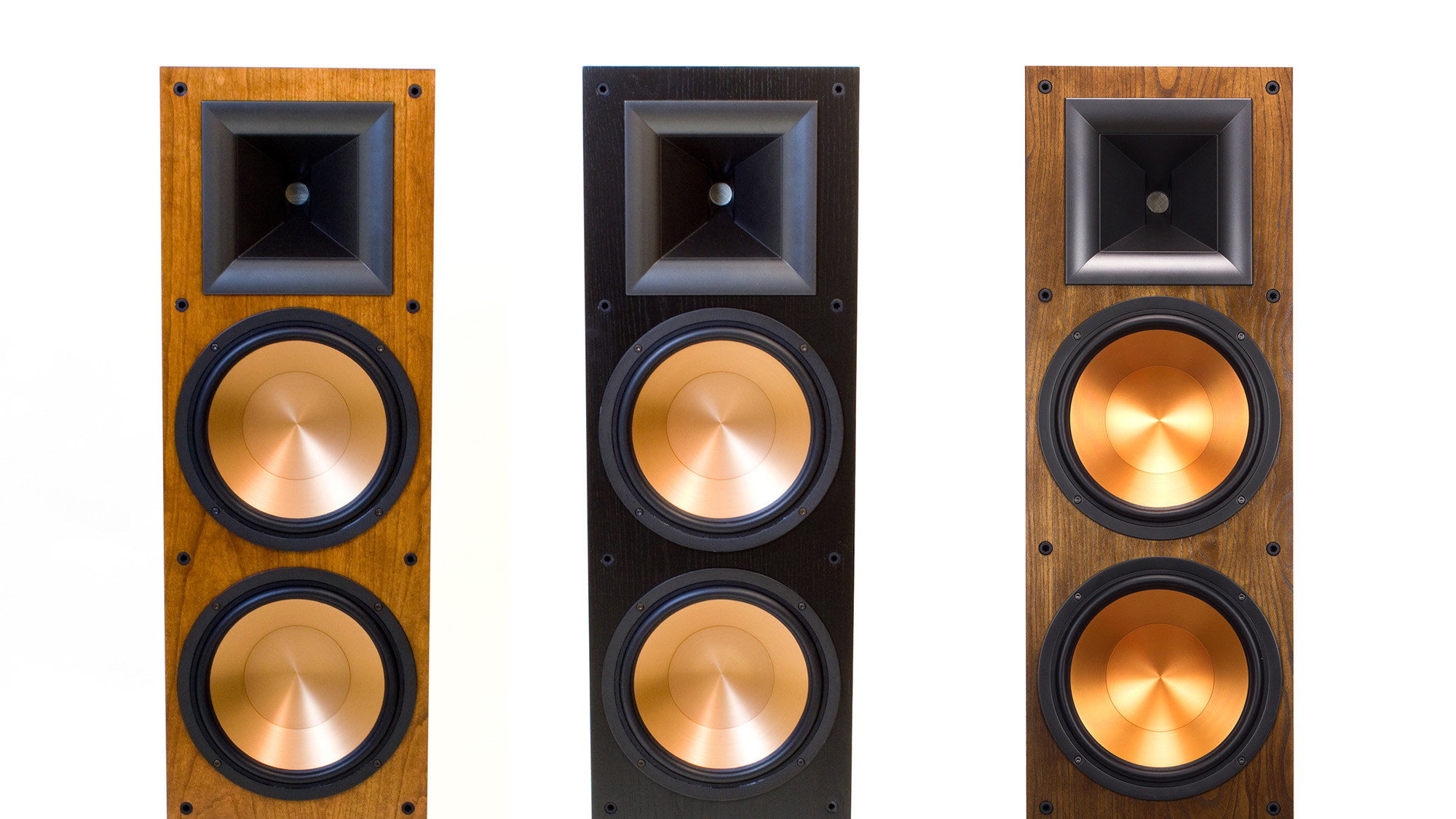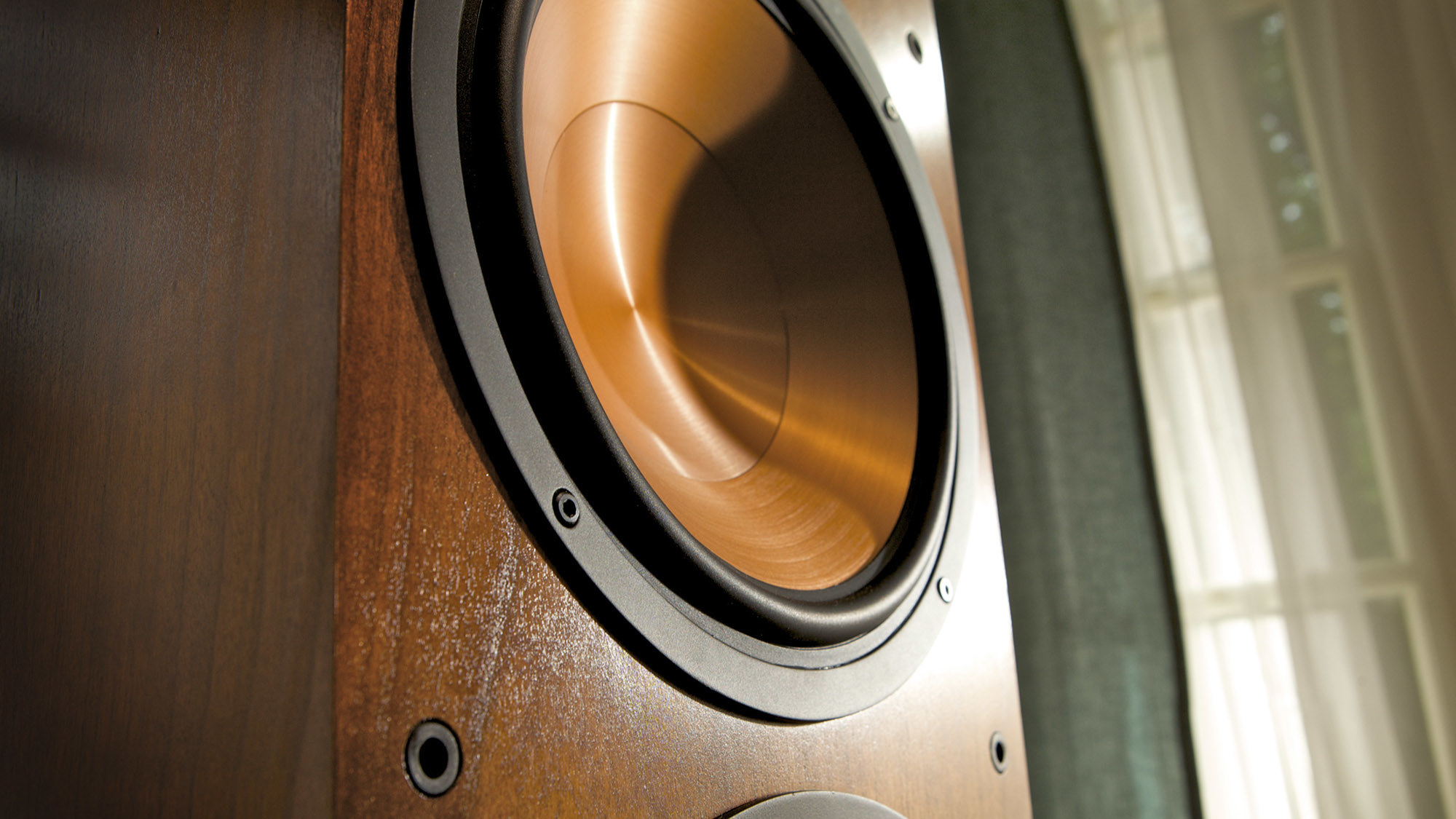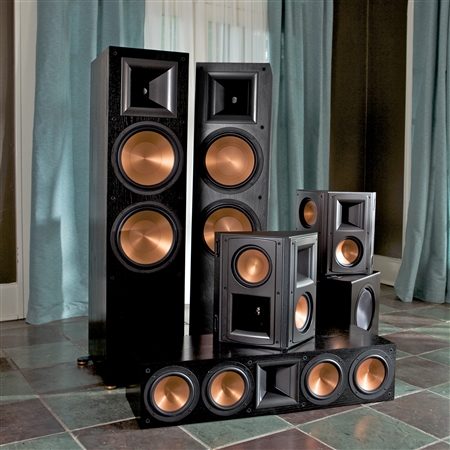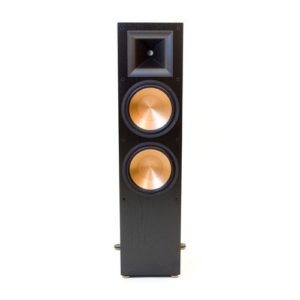
Ever since I tested the Klipsch RF-7 for just over ten years ago, I have been looking for similar experiences. It was the first time I heard a speaker the size of a fridge play tenderly acoustic music with as much credibility as heavy and hard rock. An extreme speakers in every way! The tonal structure was perhaps not the most neutral, but the sound thundered with pounding bass and still had a tonal grandeur with good resolution. One simply had to live with the fact that the cabinet resonated a little and that the treble wasn´t exactly as airy as a ribbon tweeter. The 'live' feeling was however unmistakable!
Klipsch RF-7 II
-
Sound Quality - 95%95%
-
Features - 80%80%
-
Build Quality/Finish - 95%95%
-
Price/Performance - 95%95%
SUMMARY
The gigantic floor speaker Klipsch RF-7 II combines raw power and weight with musical sweetness. The comfort of a Bentley and the engine of a monster truck!
Klipsch RF-7 II has a huge sound and convey even the largest instruments in the living room in an amazingly credible manner. The extreme dynamics makes it an exquisite rock/metal speaker, but do not be fooled – it can handle acoustic music with the greatest naturalness too.
RF-7 II is as big as a fridge and just about as easy to handle. It requires a lot of room and the proper distance to the rear and side walls. The horn tweeter should not be paired with just any amp, but deserves an amplifier that is controlled and resolute in the top frequencies.
Klipsch unfortunately stopped selling the RF-7 in 2006. A temporary replacement came in the form of the RF-83, which had three 8-inch woofers instead of the twin 10 inch drivers of the RF-7, which meant that it had a smaller footprint. The idea was perhaps to make the RF-83 a bit more "wife-friendly" and allowed access to more living space. But it did not help that it was narrower and at the same time both higher and deeper than its predecessor. It was an extremely tough speaker, but it was still not quite the same experience that I remembered from the RF-7. And I've never had it since.
As the years have gone by without an opportunity to relive the experience I got from the RF-7, I have begun to wonder if maybe I'm remembering it wrong. After all, eleven years ago when I listened to the Klipsch speakers, I wasn´t as experienced in audio and video as I am these days. I was a bit of a 'newbie', and without the experience and the references I have acquired over time.
Therefore, it is with mixed emotions I bring the RF-7 II into the testing room. Mixed emotions because I know it's hard to compete with memories. Memories of the hard-hitting rhythm instruments. The thunderous bass. The full-blown midrange that made vocals and instruments larger than life. Memories that can easily prove to be exaggerated.

Changes
Klipsch has in any case done what they could to try to improve the sound of its predecessor, mainly by fine-tuning the crossover. Since this is a two-way speaker, the woofers also reproduce the midrange. The RF-7 had the crossover tuned to 2200 Hz, which is quite high for such large woofer that a 10 incher is. To avoid getting too directional, the diameter of the speaker diaphragms should be smaller than the wavelength of the sound waves they render. A diameter of 10 inches corresponds to an upper frequency around 1300 Hz, and in the RF-7 II, Klipsch therefore cut the crossover frequency to 1200 Hz.
The new model has also been slightly expanded in the frequency range, at the expense of 1 dB lower sensitivity. However, the RF-7 II is still about ten times more efficient than most other floor-standing speakers, thanks to a sensitivity of 101 dB (1W/1 m). This is possible thanks to the large cabinet, large bass reflex ports and rolling of the bass at 30 Hz instead of 20 Hz, as Klipsch might have been tempted to do. Additionally, the treble horn works as an acoustic amplifier for the titanium tweeter.
The Memory Lives
In the test room, I usually begin by placing the speakers about 5 feet from the back wall and 3 feet from the side wall. I do that with the RF-7 II, and point them straight ahead.
With my modified CD player Hegel CDP4 connected to the brilliant integrated amplifier, the Yamaha A-S3000 (~$8,000), all is set up for an experience of the intense kind.
The song ‘Scratch’ from Morphines album ‘Yes‘ is a good example that extracts all properties. After the short bass intro the full drum kit starts, together with a fine rasping saxophone. Klipsch conveys the size of the saxophone in a more solid way than I’ve heard in a long time, while still being warm and mellow. This is perhaps the instrument the Klipsch speakers can handle best. The slightly opulent fullness in the midrange fits the saxophone perfectly and blow it up to a size such as the much more neutral and “hi-fi correct” Dynaudio Focus 260 or ELAC FS407 can only dream of.
I notice that the speakers are a little too close to the back wall and pull them out another foot. And even if the crossover frequency allows a better directionality than before, the stereo perspective becomes more focused when the speakers are toed-in towards the listening position.

Female Voices
Then it´s just to sit back with a big grin in the sofa. And although I dare say that the RF-7 II are more convincing with male voices than female voices, it is nice to see that they will not back down when playing lighter tones. Like the beautiful ballad ‘Laura‘ by Bat For Lashes. The piano chimes brittle and with good attack, while Natasha Khan’s voice excels in the middle.
You can easily tell on a simple piece of music like this that the speakers has extreme dynamics. Even when playing at relatively low volume, I see before me how the beast is waking up from its lethargy. Lies there and waits. Waiting to explode. Power resources and muscle should not be underestimated, even when playing simple musical pieces at moderate volumes. If we compare with the above mentioned ELAC and Dynaudio, the Klipsch won't render micro parts with the same delicacy and resolution. Instead you get a grandiose sound all the way!
Compared to a couple of BG Radia FS-520 with full register ribbon drivers that I’ve also listened to, the sound is of an entirely different size and macro dynamics with the Klipsch, although the resolution of the highest frequencies is not as good. Anyhow, there is no doubt about which speaker is the most entertaining. Susanne Sundfør’s demanding ‘White Foxes‘ elicited plenty of goose bumps, while it was thinner and sharper with the BG Radia (this is incidentally a song that rings quite sharp).
Klipsch RF-7 II does favor the darker frequencies a bit. But that's okay, because it's nice to get the fullness even with lighter voices. And it does not sound stuffy in any way. The tweeter also performs well, even if it´s not bursting in the same way as the mid and bass range.
Playing Loud

But you do not buy big Klipsch speakers for playing at low volume all the time. Time to turn it up a notch.
Old fashioned Rammstein is almost self-written music to speakers like this. As the ‘Asche zu Asche’ from the Herzeleid album. This is an industrial metal at its hardest, with distorted guitars, heavy drums and Till Lindemann’s distinctive deep voice. As made for large speakers!
And the RF-7 II is no disappointment. Turn up the volume, and the RF-7 II responds immediately. They do not go very deep in the bass, but on the other hand there´s an insane weight in the bass. At the same time there is a lovely cohesion further up the frequency range. Klipsch hold nothing back, and Lindemann's voice is highlighted as it should, and the sound pours forth with a bass that really feels in your stomach when you play loud.
Two things strike me. First, the Rammstein production is overly compressed, hindering the drums to punch through the wall of guitars as much as I had wanted to, so the music's power feels consistently flat. But I knew that already. Secondly, it is evident that even easy-driven speakers like these will need a more powerful amplifier than the Yamaha A-S3000 when you really want to go all out.
Changing Amplifier
At my disposal are two Burson Audio Timekeeper amplifiers ($2,600 apiece). They are bridged to mono and connected with balanced cables to a Hegel P30 pre-amp. 240 watts from each bridged amp should equate to true concert levels.
And so it is. The extra power gives the sound more life and dynamics at high sound levels, while the resolution and tranquility of the music is preserved better. One should of course not play on the pain threshold for longer periods, but it's interesting to hear what really lives in these beasts.
At more moderate volume the sound is not as rich, warm and pleasant as with the Yamaha amplifier, but it sounds neater and more well controlled.


Even MORE Muscle!
At normal listening levels, it feels like I'm getting the full benefit of the speakers with the Yamaha amplifier. But I still want to push them to the limit - not only in terms of volume level, but also to test how they behave when they are fed with music signals from an amplifier combination of bona fide high-end class. We plug in our reference amplifier: two bridged Hegel H30 and Hegel P30 pre-amp. 1100 watts to each speaker!
In particular, the sound takes on a completely different ease. The background is pitch black and although there are speakers that have a finer grained treble, the sound breathe more at the top, too. For example, Ane Brun’s interpretation of Beyonce’s ‘Halo‘. Her voice sits atop a pizzicato cello, surrounded by an airy reverb. The RF-7 II conveys the size of the soundscape, the voice will have a clearer fragility, while the cello has more poise than with the Yamaha A-S3000. Even at lower volumes.
For testing high sound pressure, How To Destroy Angels post-industrial song ‘Is Your Love Strong Enough’ from the soundtrack to ‘The Girl With The Dragon Tattoo is perfect. It starts soft and fine with Mariqueen Maandig’s naked voice, then accompanied by the electronic bass tones that are growing stronger. After a while, thundering drums comes in, along with a wall of distorted guitar that I never heard the likes of before. This fabulous production shows that even the heaviest hard rock may be resolute and, not least, dynamic sounding when cited by RF-7 II. These Klipsch speakers can scare the wits out of anyone! But they never sound hard, not until the volume gets cranked too high. Awesome!
The best thing about the Klipsch RF-7 II is that they can not just push the crazy hard, but also sound impressively clean, neat and tidy at low volumes - even though you're constantly afraid that the beast will awaken again.
Conclusion
Klipsch RF-7 II are very large speakers with an equally large soundstage. Everything sounds much more balanced than you might think, even if the sound is on the rich side of completely neutral. The horn tweeter is not the most resolved, but is not closed-in either. Everything ties together incredibly well. And as long as you play with good electronics, it never becomes hard either. For the same reason, one can say that the Klipsch RF-7 II are musical omnivores. A heavy symphony orchestra could be a bit much, but with everything else, it sounds excellent. Crank the volume and awake the beast!
RF-7 II combines raw power and size with musical sweetness. Almost like a cross between Cerwin-Vega and Sonus Faber. Or to use a car analogy: as if someone rebuilt a Bentley to a monster truck!
Klipsch RF-7 II is not like other speakers in its price range. You can easily find a speaker that has a more neutral sound character and a better resolution of the harmonics. But good luck finding someone who sounds just as tough, engrossing and sufficiently refined to keep up on everything you throw at it.
My more than a decade old memories of the first generation RF-7 need not fear that they were excessive, they've become rather surpassed.
GET IT ON eBay!
- FEATURES
- SPecIFICATIONS
FLOORSTANDING SPEAKER WITH ELEGANT FINISH
Black ash or medium cherry genuine furniture-grade wood veneer
Proprietary technology provides a unique combination of precision, clarity and effortless power
Produces the most detailed high frequencies
Minimizes distortion
Ensure tight musical bass
Allow for the bi-wiring or bi-amping of speaker
Provide exceptional and extensive bass performance












We had first bought speakers from a company who’s name began with a “b” for our studio and noticed that they were very limited and mostly bright but not what we have learned to be “full”. We almost went with another brand until we started asking around. A local specialist recommended Klispch for their quality and “range”. He went on and on about how you can get the most out of your dollar and still sound like some of these high priced speakers he had to offer. We then ran into a few great reviews and it pulled us in even further. Finally we stopped by a local store that had the on display and we melted. Needless to say, we now have the RF7-II speakers at the studio. They deliver exactly what we need and when the clients are away, we never stop playing. Highly recommended.
I just set up a new home theater system based around the rf7ll,Yamaha Rx a2040 ( 160wpc x18) atmos receiver ,Samsung 4k 65in and the other channels all klispch driven including their 15in 800 watt sub.
My last HT was a discrete setup using a modified Sony 5.1 Dolby digital preamp,Yamaha b2 amps for front and center,pioneer spec 4 rear and a Yamaha m70 driving 2 jbl 18 in subs.Speakers were all B & W
Using my thorens grado turntable and some Original Master Recordings I am quite happy with the with the soundstage and imaging of my new speakers.In two channel stereo with sub woofer on they sound as good as anything that I own.
I also own a pair of Heresey and Chorus ll with the Heresey speakers connected to a Scott 130/LK150 combo in my den with the pair of Yamaha b-2 amps fed from an Accuphase preamp drive some of the B&W speakers in my basement
As far as their HT use they are nothing short of amazing,with loads of impact and dynamic range this system leaves goosebumps all over when played at loud levels.This system puts most movie theaters to shame with it clarity and range and it’s ability to play loud for long periods without any ear strain
All in all i would rate these speakers a 9.5 out of 10 for both critical listening and home theater use
i live in a mobile home and have rf7ii’s for the fronts and surrounds and a rc64ii center and rsw12 sub woofer, i feel the movies and sometimes have to look outside to make sure we are not falling off the lot, i am a klipsch addict, and constantly get distracted by the sound from these speakers produce, i always recommend any one looking for speakers to try klipsch, i grew up in the seventies and my ears are still ringing from the concerts and have never passed a hearing test, i can only imagine what i,m missing,
The Klipsch rfii are an amazing speaker for the money. Huge soundstage and very transparent. Comparisons done with speakers that cost more or the same and these just spanks them. Yes, size does matter and so does your equipment make a difference. Highly recommended for 2 channel serious listening. No Sub required here folks.